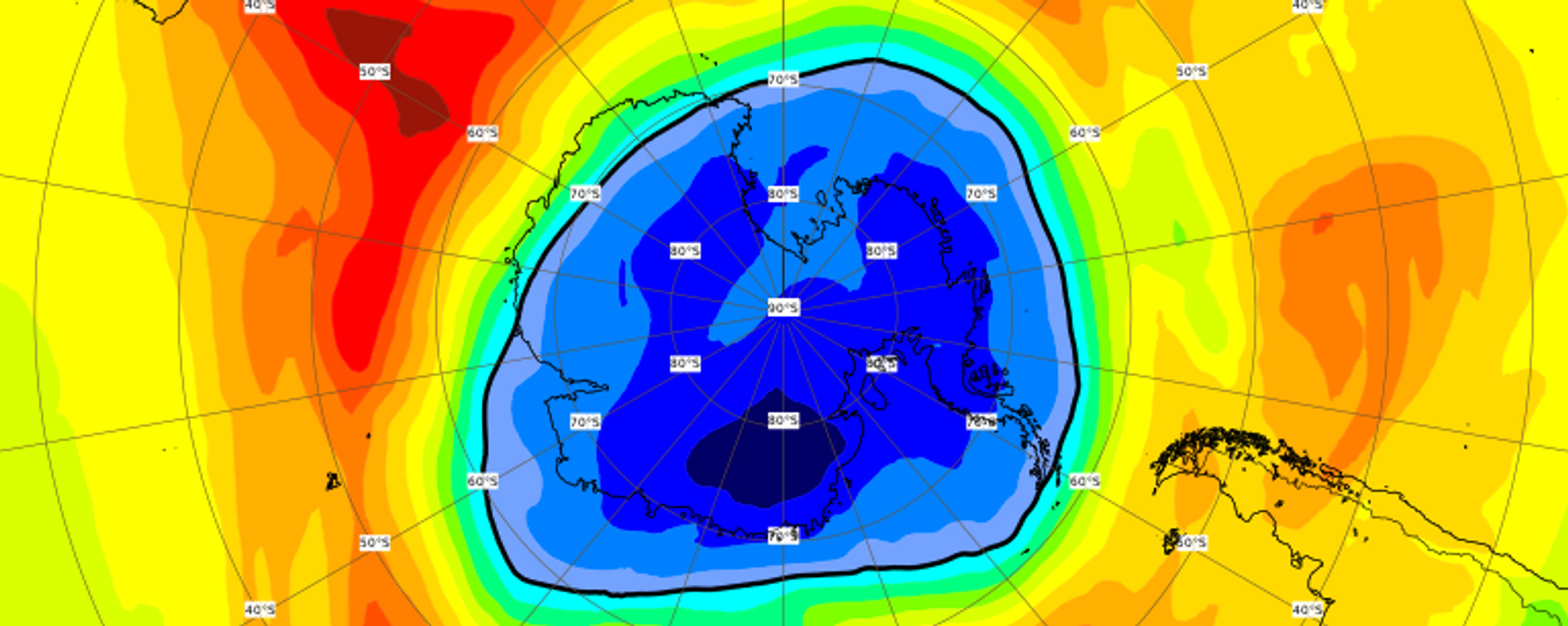Canadian Scientist Ripped For 'Flawed' Discovery of Huge Cancer-Causing Ozone Hole Over Tropics
12:37 GMT 12.07.2022 (Updated: 10:42 GMT 21.04.2023)

© Sputnik / Alina Polyanina
Subscribe
Controversy had been sparked after a Canadian researcher claimed he had identified an ozone hole over the tropics that he argued was seven times larger in area than the one over the Antarctic.
A Canadian scientist recently found himself under a barrage of criticism for venturing away from the mainstream consensus and claiming he had discovered a huge hole in the ozone layer above the tropics.
Dr. Qing-Bin Lu, a Professor and University Research Chair in Chemical Physics at the University of Waterloo in Canada, had published a peer-review paper in AIP Advances on July 5, arguing that a large and all-season ozone hole in the lower stratosphere over the tropics (30°N–30°S) had existed since the 1980s, but had gone unnoticed.
The scientist claimed the depth of this tropical ozone hole was comparable to that of the well-known Antarctic ozone (O3) hole. Meanwhile, its area was about seven times that of the latter.
“The tropics constitute half the planet’s surface area and are home to about half the world’s population. The existence of the tropical ozone hole may cause a great global concern. The depletion of the ozone layer can lead to increased ground-level UV radiation, which can increase risk of skin cancer and cataracts in humans, as well as weaken human immune systems, decrease agricultural productivity, and negatively affect sensitive aquatic organisms and ecosystems,” Lu said.
Furthermore, the Antarctic ozone hole was not closing as fast as expected, suggested the scientist. He also blamed a new ozone-destroying mechanism for the process. According to Dr. Qing-Bin Lu, cosmic rays, or “high-energy protons and atomic nuclei that move through space at nearly the speed of light,” were at fault, as they interact with halogen-containing gases in the stratosphere.
After sifting through a wealth of atmospheric data and referencing numerous prior studies, Lu also put forward the theory that ozone levels in the lower stratosphere about 14 to 21 kilometers above the tropics had fallen by around 40% to 70% since the 1960s, with the greatest decline at the equator.
This was the unrecognized ozone hole that he warned about and that put the scientist in the line of fire from critics.
The research was immediately flagged by critics as deeply flawed.
"I am surprised that this study was published at all in its current form. The claim in this research of such large ozone changes in the tropics have not been apparent in other studies, which makes me very suspicious," Martyn Chipperfield, a professor of atmospheric chemistry at the University of Leeds in England, told the Science Media Centre, an independent UK-based press office.
He added that science should “never depend on just one study, and this new work needs careful verification before it can be accepted as fact."
Dr. Paul Young, atmospheric scientist at Lancaster University and lead author of the 2022 WMO/UNEP Scientific Assessment of Ozone Depletion, similarly frowned over the new “findings”.
“There is no ‘tropical ozone hole’, driven by the author’s proposed electrons from cosmic rays or otherwise. The long term changes and year-to-year variability of the ozone layer in the tropical lower stratosphere (~15-20 km up) are well understood to be the result of both human-driven processes and natural drivers,” he said.
The Earth's ozone layer is found in the stratosphere, about 11 to 40 kilometers above the Earth's surface, and works as a sunscreen of sorts, sheltering the globe from ultraviolet (UV) rays, which can harm living cells.
An ozone hole is typically defined as a region where the ozone concentration dips below 220 "Dobson Units." The latter is a measure of the number of ozone molecules in a column of air that stretches from the planet's surface to space. It was the discovery of ozone holes that prompted the passage of the 1987 Montreal Protocol, a treaty aimed at phasing out the production of ozone-depleting chemicals such as CFCs.
Responding to the wave of criticism over his study, Dr. Qing-Bin Lu issued a statement, saying:
“The present discovery calls for further careful studies of ozone depletion, UV radiation change, increased cancer risks, and other negative effects on health and ecosystems in the tropical regions.”

